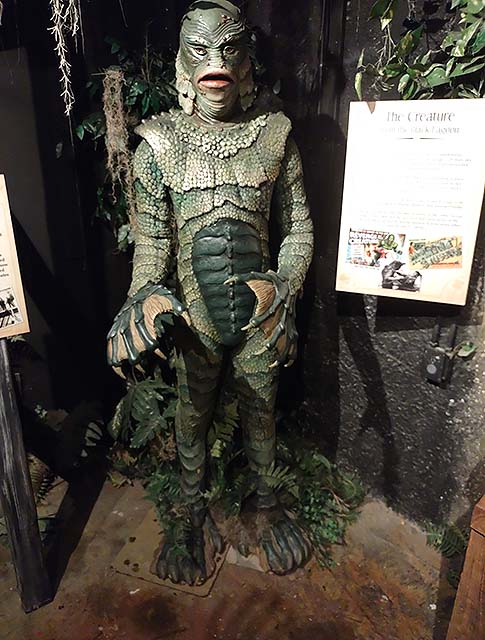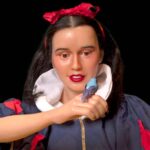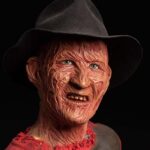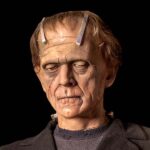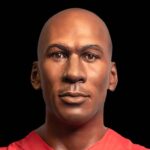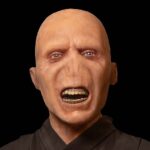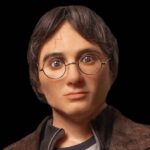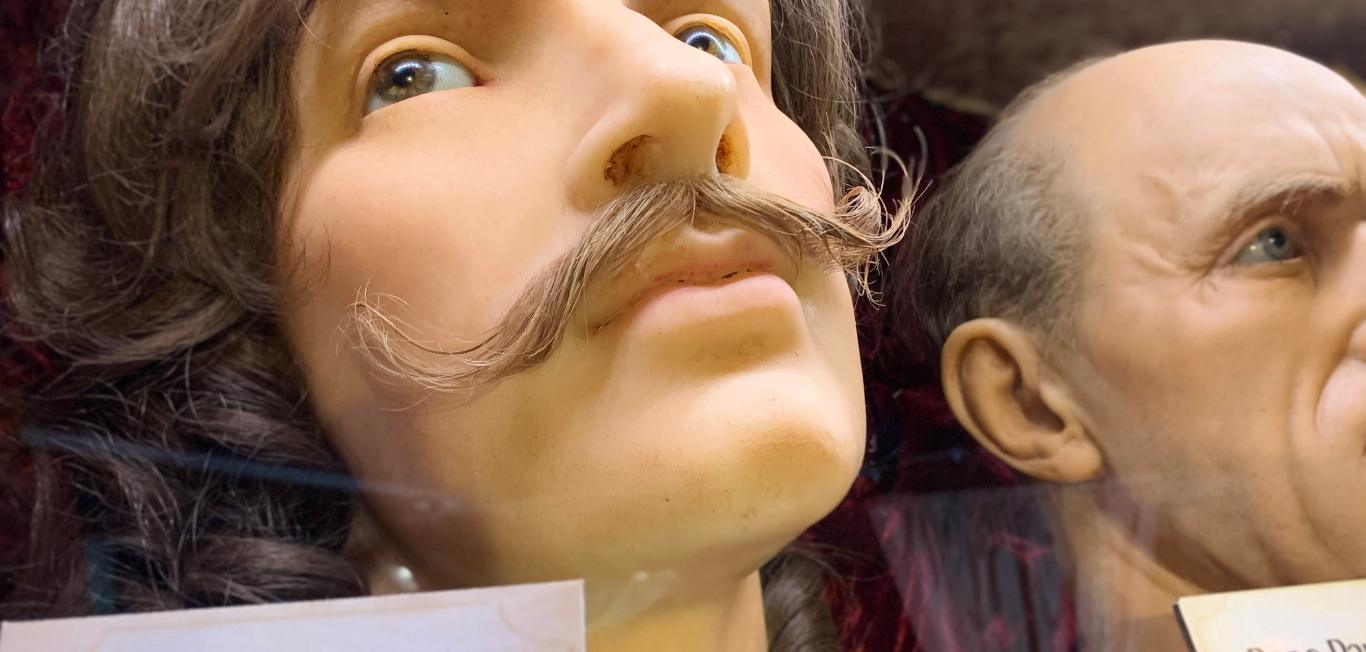History of the Creature From the Black Lagoon
The creature from the black lagoon is a fictional character and the main antagonist in the 1954 horror film “Creature From the Black Lagoon,” directed by Jack Arnold. The creature is also known as the Gill-man. It was created by screenwriter Harry Essex, with contributions from Arnold and producer William Alland. In the film, the creature from the black lagoon is depicted as a prehistoric amphibious creature that is discovered in the Amazon Rainforest. The creature has a scaly body, webbed hands and feet, and prominent gills on its neck. It becomes fascinated with a female scientist who is part of an expedition exploring the area, leading to conflict and terror. The film became a classic of the horror genre and created two sequels, Revenge of the Creature (1955) and The Creature Walks Among Us (1956). Creature From the Black Lagoon has since become an iconic figure in popular culture and is recognized as one of the classic Universal Monsters alongside Dracula, Frankenstein’s monster, the Wolf Man, and others.
DID YOU KNOW?
The Creature From the Black Lagoon is an iconic figure in popular culture and is recognized as one of the classic Universal Monsters.
Interesting Facts About “Creature From the Black Lagoon”
Glenn Strange was initially approached to play the Gill-man.
Initially, Glenn Strange was considered for the role of the Gill-man. With his vast experience in portraying monstrous characters and undergoing elaborate makeup transformations, Strange was a fitting choice. From 1944 to 1948, he took on the iconic role of Frankenstein’s monster following Boris Karloff’s departure from the franchise. Strange’s portrayal extended to films including Universal’s “House of Frankenstein,” “House of Dracula” and “Abbott and Costello Meet Frankenstein.” Strange ended up turning down the role because he wasn’t a good swimmer.
The movie’s concept was created at a “Citizen Kane” dinner party
During the production of “Citizen Kane,” Orson Welles invited William Alland to a dinner party, one with the actors in the film, along with cinematographer Gabriel Figueroa. It was on this particular evening that Figueroa remembered a captivating story he had come across during his travels, which was an account of amphibious creatures, possessing both human and reptilian traits, lurking in the depths of the Amazon River. This anecdote left a lasting impression on Alland, who, more than 10 years later, transformed his fascination into the cinematic creation, “Creature From the Black Lagoon.”
The Creature was modeled after the Academy Award
Universal successfully secured the talents of an emerging filmmaker with an impressive background to do the project. In 1951, Jack Arnold, renowned for his documentary “With These Hands,” earned an Academy Award nomination. Although he didn’t claim the Oscar, Arnold cherished the souvenir certificate that the Academy sent to nominees. Unexpectedly, this memento would ignite an intriguing creative spark during the making of “Creature From the Black Lagoon.”
Recalling the episode to Cinefantastique magazine in 1975, Arnold explained, “The certificate had a picture of the Oscar statuette on it. I thought, ‘If we add a gilled head, fins, and scales to it, that would closely resemble the type of creature we’re pursuing.’ They created a rubber mold, and gradually the costume took form.” Initially, the creature possessed a sleek, eel-like physique, as described by leading lady Julie Adams (credited as Julia Adams).
Restricted eyesight became a big challenge for the Creature performers
Browning reflected on the challenges he faced while portraying Gill-man, stating, “Vision was the hardest part. I didn’t wear any goggles or [a] facemask and the eye of the suit sat about an inch from my eye … it’s kind of like looking through a keyhole with blurred vision, so it was difficult seeing.” Ben Chapman also encountered problems with the eyeholes. In the final scenes, the creature carries an unconscious Kay Lawrence (played by Adams) through the cave. Due to Chapman’s limited peripheral vision, he accidentally slammed Adams’ head into an artificial rock.
Adams recalled the incident, saying, “I was, of course, being carried with my eyes closed and, all of a sudden, I had a bump on my head.” Thankfully, she remained unharmed, and shooting resumed a few hours later.
4 Things You Should Know About “Creature From the Black Lagoon”
1. The film was originally presented in 3D
The “Golden Era” of 3D, spanning from 1952 to 1954, witnessed a surge in popularity of the technology. However, “Creature From the Black Lagoon” emerged during a period when the enthusiasm for 3D movies was waning, though it was still promoted with the gimmick. Numerous advertisements for the movie boasted about its 3D terror and highlighted its distinction as the first underwater 3D film. As the trend was losing steam by then, many theaters opted to screen the film in the 2D format. Nonetheless, the movie resurfaced in 1975, being re-released in 3D, and was made available in Beta and VHS formats.
2. The Gill-man once appeared on “The Munsters”
In 1964, Universal introduced a television series named “The Munsters,” featuring their beloved classic monster characters. This show faced formidable competition from “The Addams Family,” yet it managed to resonate more with viewers due to its characters’ familial resemblances. One memorable episode titled “Love Comes to Mockingbird Lane” revolves around the arrival of Uncle Gilbert, a relative of Herman Munster, who comes to claim $120,000 he had previously sent to the Munster family. Notably, in The Munsters, the Gill-man possesses the ability to speak and has a background as a former politician. His fortune, however, stems from his underwater expeditions in which he discovered lost treasures.
3. Julie Adams was injured on set
Julie Adams, renowned for her portrayal of Kay Lawrence in “Creature From the Black Lagoon,” experienced an injury on set. With an impressive filmography of nearly 150 credits, Adams is best remembered for her role as the woman taken and loved by the creature. In a pivotal scene, the creature carries an unconscious Kay through a cave. During the filming, the set’s freezing conditions compelled Adams to remain still while being carried by Ben Chapman, who played the creature. However, owing to the limited visibility inside the Gill-man suit, Chapman accidentally scraped Adams’ head against the set. Thankfully, her injury was not serious, allowing shooting to resume shortly after the incident occurred.
4. The Gill-man wasn’t really a monster
Although “Creature From the Black Lagoon” may initially appear to be a typical Universal Monsters movie, it contains underlying environmental themes as well. An impactful moment occurs when Kay discards her cigarette into the lagoon and the camera follows it underwater, revealing Gill-man observing her from below. Subsequently, a scene unfolds where the water’s surface is littered with dead fish, indicating the detrimental effects of chemicals poured into the water. Furthermore, David’s desire to photograph the creature instead of capturing it and bringing it back to the city reflects a progressive mindset. This suggests a shift toward a more enlightened perspective. Upon closer examination, it becomes evident that the creature is not truly a monster but rather a being striving to defend its habitat. Upon subsequent viewings, “Creature From the Black Lagoon” remains a film with themes that remain pertinent in contemporary times, making it undeniably relevant even today.
“Creature From the Black Lagoon” Helped Introduce an Iconic Film Genre
“Creature from the Black Lagoon” contributed to the creation and development of the science fiction genre through its innovative and captivating storytelling. As one of the notable Universal Monsters movies, it blended elements of horror, adventure, and science fiction in a unique and compelling way. The film introduced a mysterious creature from an unexplored and exotic location, the black lagoon, which immediately captured the imagination of audiences. The creature itself possessed the distinct sci-fi appeal of a humanoid amphibious being with unique abilities. This fusion of human and aquatic characteristics created a sense of wonder and fascination, paving the way for the exploration of otherworldly creatures and the mysteries of the natural world. Moreover, “Creature From the Black Lagoon” sets the stage for subsequent science fiction films by intertwining scientific exploration, environmental themes, and the ethical dilemmas surrounding the creature’s existence. It laid the foundation for future movies that would delve into scientific experimentation, genetic mutations, and the consequences of human interference in nature. In essence, “Creature From the Black Lagoon” played a significant role in shaping the science fiction genre by combining elements of suspense, adventure, and scientific curiosity, captivating audiences and inspiring the creation of countless sci-fi films that followed.
DID YOU KNOW?
The film laid the foundation for future movies that would delve into scientific experimentation, genetic mutations, and the consequences of human interference in nature.
FAQs
Why is the creature from the black lagoon important?
The creature from the black lagoon is important for several reasons, particularly in the realm of science fiction. First, it achieved iconic status as a classic movie monster, making a lasting impact on the genre. The film pioneered the use of 3D technology, pushing the boundaries of visual storytelling and advancing cinematic techniques. Additionally, it seamlessly blended elements of horror and science fiction, creating a captivating and innovative cinematic experience. The creature’s unique appearance and design have solidified its place as a beloved figure in science fiction and popular culture. Its contributions to the genre influenced future science fiction films, leaving a lasting legacy within the realm of sci-fi entertainment.
What inspired “Creature From the Black Lagoon?”
“Creature From the Black Lagoon” was inspired by a story about amphibious beasts in the Amazon River shared during a dinner conversation. Director Jack Arnold also drew inspiration from an Oscar nomination certificate, envisioning a creature with gills, fins, and scales. These influences resulted in the creation of the iconic monster for the film.
Where was the 1954 “Creature From the Black Lagoon” filmed?
The 1954 film “Creature From the Black Lagoon” was primarily filmed in various locations in Florida, United States. The primary filming site was Wakulla Springs, located in Wakulla County, Florida, which served as the fictional black lagoon in the movie. Additional scenes were shot at Universal Studios in California. The lush natural setting of Florida’s waterways provided an ideal backdrop for the film’s Amazon Rainforest setting.
